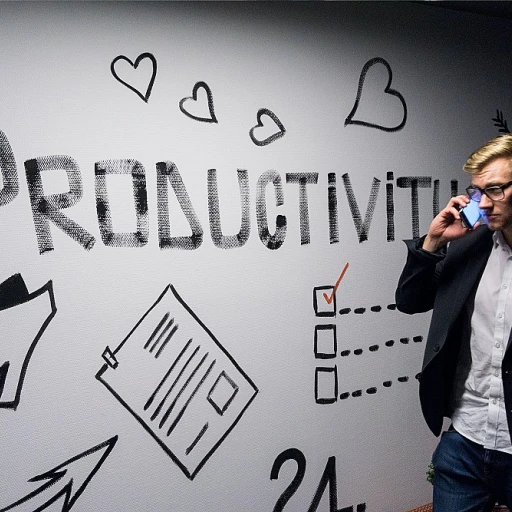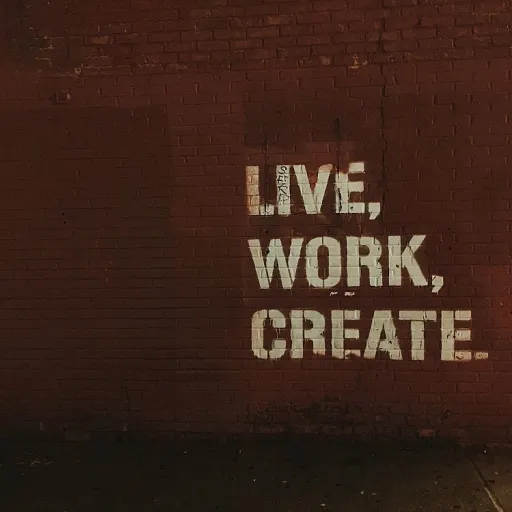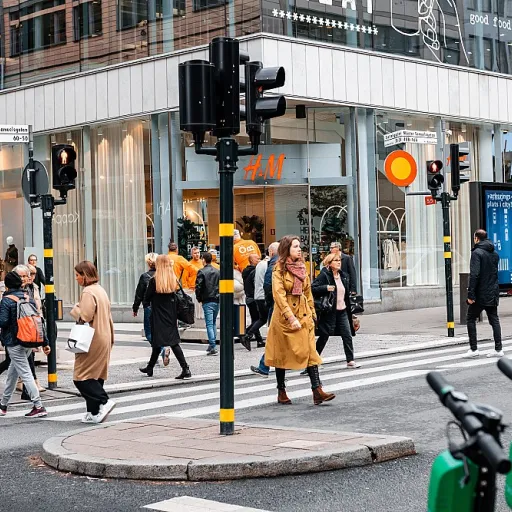
Understanding Hybrid Work Arrangements
Decoding the Hybrid Work Puzzle
The concept of hybrid work arrangements has become a significant clue in understanding the evolving landscape of work. As businesses navigate the post-pandemic world, the shift towards a blend of remote and in-office work is reshaping traditional work environments. This transition is not just a passing trend; it's a fundamental change in how organizations operate, affecting everything from employee productivity to commercial property demands.
Hybrid work, often seen as a crossword puzzle with many answers, offers flexibility that was mostly absent in the pre-pandemic era. Employees can now work from home or the office, depending on their roles and company policies. This flexibility is a key factor in why many companies are adopting hybrid models, as it caters to diverse work preferences and can enhance overall job satisfaction.
However, this shift is not without its challenges. For instance, the demand for commercial office space is changing, leaving some properties mostly vacant. This has significant implications for property owners and investors, who must adapt to these new work arrangements. The impact is particularly noticeable in urban areas like New York, where commercial property vacancies are becoming more common.
As we explore the implications of hybrid work on commercial real estate, it's crucial to understand how these arrangements are influencing the market. For those interested in implementing a hybrid work model, it's essential to consider how these changes might affect your business. For more insights on how to request a hybrid work model, you can explore this guide.
The Shift in Commercial Real Estate Demand
Commercial Demand Transformation
The commercial real estate landscape is seeing a considerable transformation, predominantly influenced by the advent of hybrid work arrangements. Offices are no longer the primary spaces demanded by organizations. As the economy witnesses these shifts, a puzzle akin to a crossword clue unfolds, demanding answers to the uncertainties posed to the commercial property sector.
The clues surrounding the future of commercial properties often point to a mix of demand and declining interest in maintaining large, traditional office spaces. With employees working both onsite and remotely, businesses are re-evaluating their real estate needs. In March, many businesses left mostly vacant commercial properties that used to buzz with activity. The trend of downsizing or seeking flexible spaces: a clue to understanding property needs in a world where hybrid work is the norm.
A range of famous commercial areas, from bustling Times Square to more serene areas, now feature mostly vacant or underutilized properties. Some have already begun innovating to prevent these spaces from turning into urban stonewalls that echo silence rather than vibrancy. The need for dynamic space usage is growing, just as speed wagons quickly adapted to replace horse-drawn carriages in bustling streets. Adapting to hybrid work modes involves creatively repurposing space, which offers a compelling clue for property investors.
Organizations in financial hubs such as those seen in the New York Times advertisements of old are now diversifying their footprint needs. Some spaces have cleverly transformed into shared workspaces, offering flexible leases that cater to the needs of businesses navigating the nuanced terrain of new work arrangements. Such strategies resonate with concepts from the York Stonewall development, hinting at new uses for properties that were otherwise fading into obscurity.
The future clearly indicates a redirecting of demand – from traditional, singular usage buildings to multipurpose venues that accommodate a variety of work styles. To address evolving demands, property owners must seek answers to commercial property shifts as they craft strategies that align real estate with workforce expectations in this changing economic climate.
Challenges for Property Owners and Investors
Challenges in Revamping Commercial Spaces
Property owners and investors are finding themselves in a puzzling situation due to the rise of hybrid work arrangements. The shift in work patterns has led to a scenario where offices are mostly vacant, with the property left in a state of limbo, creating a hybrid work crossword of sorts that requires creative solutions. There are several challenges they face, not unlike piecing together a challenging work transformation puzzle.
Firstly, the demand for commercial properties has shifted, leaving many left mostly unoccupied. In particular, urban areas and tech hubs like New York, have seen significant stonewall resistance to returning to a traditional office setup. The complication is further exacerbated by evolving work cultures, which are driven by technological advances and a preference for flexibility among new-age employees.
Secondly, financial strains are being felt since maintaining and managing mostly vacant commercial properties can be analogous to maintaining a haunted mansion—you must keep it appealing in hopes of attracting future tenants while dealing with current costs. The crossword clue here is finding the balance between cost and innovation. Investors must provide answers commercial property owners can use to adapt their offerings without bleeding finances.
Lastly, the answers to commercial success in this new era lie in flexibility and adaptability. Investors are tasked with identifying clues hidden within market trends and tenant preferences. It's about crafting innovative solutions similar to finding the right combination in a word puzzle, where the prompt might be about a popular culture reference like 'zombie office' or 'ryan reynolds,' reflecting how modern-day workspaces are evolving. The times are changing, and so must the approach to property investment.
Innovative Solutions for Vacant Properties
Creative Strategies for Revitalizing Empty Spaces
As hybrid work arrangements become more prevalent, commercial property owners face the challenge of dealing with mostly vacant spaces. The shift in demand has left many properties in a state of limbo, prompting the need for innovative solutions. Here are some strategies that can breathe new life into these spaces:
- Flexible Leasing Options: Offering short-term leases or co-working arrangements can attract businesses that are still figuring out their long-term needs. This approach provides a clue to property owners on how to adapt to the changing landscape.
- Mixed-Use Developments: Transforming commercial properties into mixed-use spaces can cater to a variety of needs. By incorporating residential, retail, and office spaces, property owners can diversify their tenant base and reduce vacancies.
- Community Engagement: Hosting events or pop-up shops can draw people into otherwise vacant properties. This not only increases foot traffic but also provides potential tenants with a glimpse of the property's potential.
- Adaptive Reuse: Repurposing buildings for different uses, such as converting office spaces into residential units, can be a viable solution. This approach has been successful in cities like New York, where the demand for residential space often outweighs commercial needs.
- Technology Integration: Implementing smart building technologies can make properties more attractive to tech-savvy tenants. Features like energy-efficient systems and advanced security can be a significant draw.
These strategies not only address the immediate issue of vacancies but also position property owners to better adapt to future trends in the commercial real estate market. As we continue to explore the impact of hybrid work, it's clear that flexibility and innovation are key to thriving in this new era.
The Role of Technology in Adapting Spaces
Innovative Adaptations Using Technology
The movement toward hybrid work arrangements has compelled stakeholders to reconsider the traditional use of commercial spaces. With vacancies on the rise, technology emerges as a beacon of transformation, offering solutions to efficiently repurpose these mostly vacant spaces into versatile environments.
Smart technology integration becomes pivotal in transforming commercial property. Sensors, IoT devices, and AI-driven systems can help tailor spaces to meet the demands of various work arrangements. One notable example is the use of adaptive lighting and climate control that automatically adjust based on occupancy and activity levels, paving the way for energy efficiency and enhanced user comfort.
Digital platforms, akin to a crossword clue requiring a thoughtful approach, are reshaping how these spaces get utilized. Digital signage, virtual reality tours, and management software allow property owners to attract potential clients and showcase the multifaceted potential of their commercial properties. These technological solutions provide the answers to maintaining relevance and competitiveness in this shifting landscape.
The use of flexible office designs reminiscent of a solution to a deadpool crossword clue, encompasses modular furniture and moveable partitions that adapt to diverse business needs. These adaptable layouts support both collaborative and private work settings, accommodating the equilibrium hybrid work demands.
Finally, the incorporation of advanced communication tools connects remote workers seamlessly, bridging the gap between physical presence and virtual participation, transforming the commercial real estate space into a thriving hub, rather than a haunted mansion left mostly vacant.












